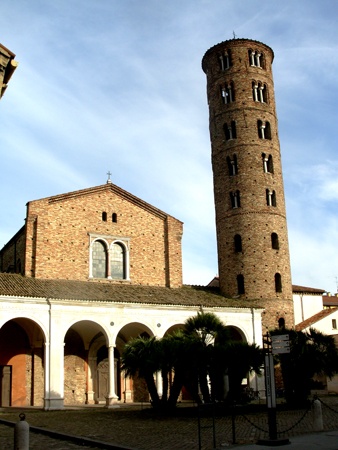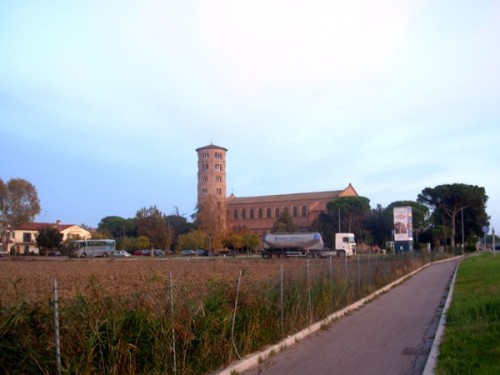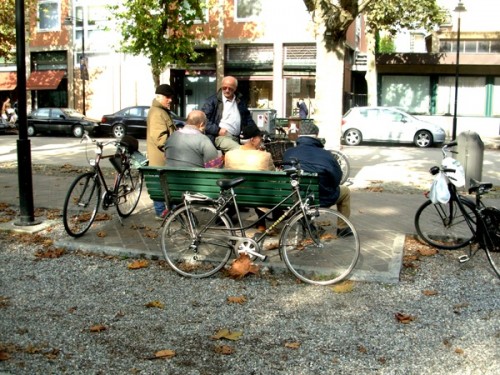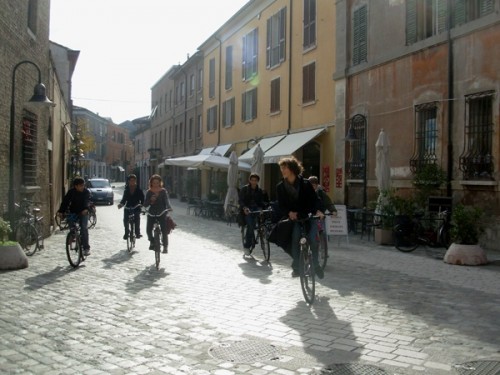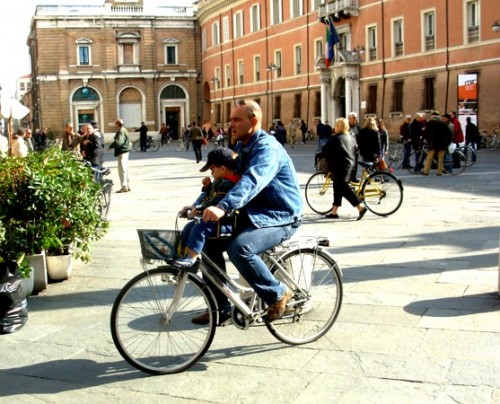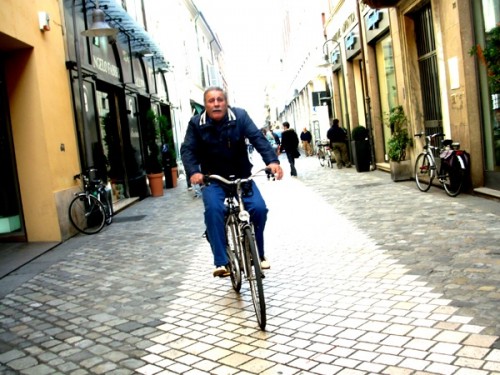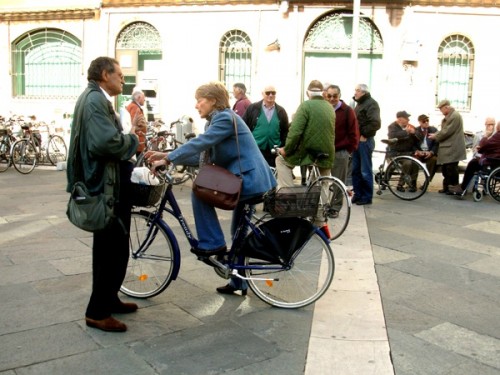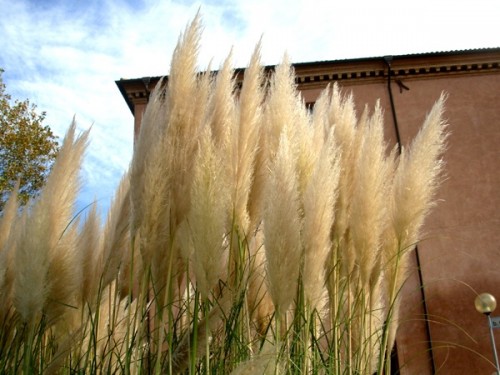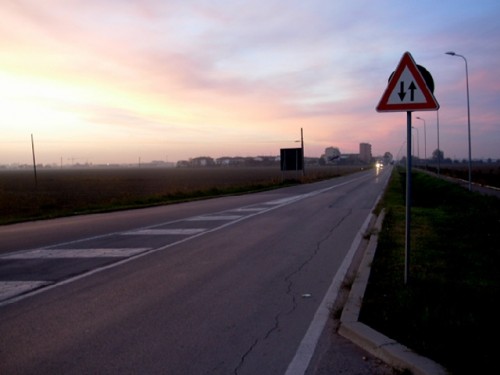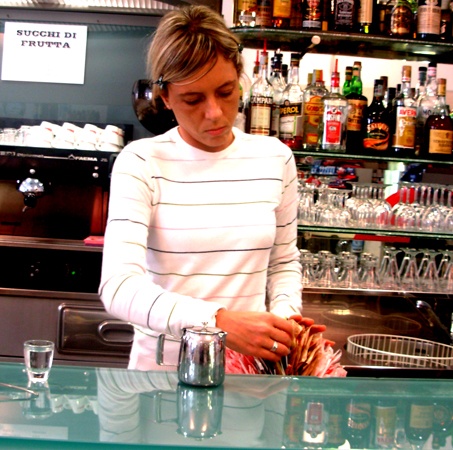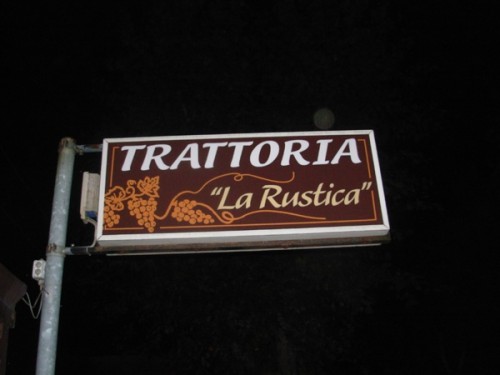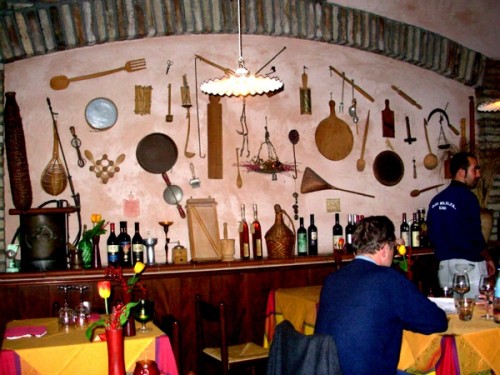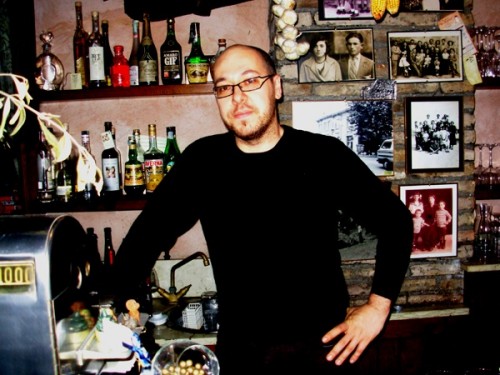Italy: Ravenna
A Mosaic of Sights and Flavors
By: Charles Giuliano - Feb 01, 2008
The theme of our three week tour of Northern Italy was to spend a week in Venice for the Biennale and visit a series of small towns starting and eventually departing from Milan. In planning the itinerary we sought the advice of artist friends who are well traveled in this region. But virtually every possible destination that I mentioned to Harry Bartnick was followed by "That's a wonderful place to visit becauseÂ…"
Initially, there was a plan to travel from Milan to Padua for Giotto and on to Vicenza with its many Palladian villas before arriving in Venice. Because of complications with booking a hotel in Venice we had to arrive sooner and that eliminated Vicenza. After Venice we planned to visit Ravenna and its Byzantine mosaics. When I mentioned this to Grace Consoli her input was not to miss San Marino which is close to Ravenna. Somehow I had hoped to tuck in a brief stay in Ferrara but that just proved to be where we switched trains from Venice to Ravenna.
The important point is that one has to be flexible. And, as Harry aptly pointed out, any day spent in Italy is better than just about anywhere else in the world. So that is a good philosophy to adhere to when there are those inevitable bumps in the road and last minute changes of plan. To quote Voltaire's Candide "This is the best of all possible worlds." Even through floods, plague and earthquakes. Or, in Italy, strikes, holidays, and other natural disasters.
So clutching a thick copy of our traveler's Bible, the trusty "Let's Go Italy" we charged on. The guide book is published annually by the Harvard University students dating back to 1960. It provides invaluable tips for low budget travel. This includes a wonderful, succinct overview of destinations including hotels, hostels, restaurants, transportation and points of interest.
Our copy was printed in 1999. Harry and I picked up a bunch of Let's Go guides on sale during a trip to New York. Yes, they are updated annually, but most of the information we found doesn't vary that much from year to year. Except in Munster, a few years back, when we biked all over town to the charming little restaurant which went out of business. Oh well.
We called ahead and took the Let's Go recommendation for the Hotel Ravenna which, true enough, was just steps from the train station. From there it went down hill. The staff was generally rude and less than helpful. The room was small and generic; Ok for that kind of hotel. But the breakfast was the worst we encountered. It consisted of the usual do it yourself, instant coffee machine and some packaged croissants. In cellophane. We made due but I was shocked to find that the sumptuous breakfast was added to be the bill, and not cheap, when we checked out. I argued that I was never told. With a huff the woman pointed to the small print on the sign behind the counter.
It was a late Sunday afternoon when we arrived and got settled. We inquired for a restaurant recommendation. The Trattoria Rustica was within walking distance and just what we were looking for. But also sold out for the evening. We made a reservation for the following night and it proved to be everything we hoped for. In fact one of our most enjoyable meals in Italy. It is a small, family owned restaurant featuring wonderful local dishes. But, on Sunday night, we ended up at a gonzo Indonesian buffet that featured a video projection of Southeast Asia.
On Monday as we set out to explore we found Ravenna to be one of those small and delightful Italian cities. At a fairly brisk pace we were able to take in the several churches with mosaics that date to the 6th century. We will report on them separately.
Like a lot of small Italian towns there are more bicycles than cars. Everyone was pedaling about. Or stopping to talk in small clusters. There were the old men on benches and mothers pushing strollers. The occasional lovers embracing. And those truly magnificent mosaics as we followed the map and found our way through narrow winding streets.
By late afternoon we had seen all of the famous churches. Except Saint Apollinare in Classe. To reach that church, in what was once the port of the city, you take a bus from the train station. It took about twenty minutes to reach the large church which is today in the middle of nowhere. Classe was once a lively city of which little is left and the church is surrounded by vast open fields. The interior was dim and subdued with the fading light of late afternoon.
We caught the bus back into town while enjoying a wonderful sunset as the church faded into the distance. After a bit of freshening up we strolled on the Trattoria Rustica and a truly wonderful meal. We observed potential diners turned away from the small room with just one waiter, the nephew of the owners. The next morning we packed up, and after a delay of a couple of hours, boarded a train for Rimini, a stepping stone on the way to San Marino. Ciao for now.

